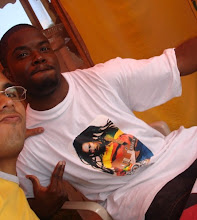Gary Hill Notes
Visual artist use image and sound that challenge language
Video structure disrupted the screen formal structure by challenging the constraints of representation and language.
The Interview
- Hill tries to keep the image moving
- doesn't like using image or camera rather be engulfed in the experience and have memory. Be involved in life and not watch one frozen moment on a photo.
- Hill's says imagination is so much better then a image and there is no fixed position or cropping
-Hill's work has always been about thought and language
-feels that image without though is nothing more that eye candy
-plays with illusion. language and multiple narrative
Hill's "Still life" piece is made because he want to move beyond the standard subject-object narrative and deal with consumption, reflect on consumption. Hill's uses over a dozens monitors ranging from 4 inches to 25 feet of everyday object that are computer generated. The images are projected on a screen with a wandering camera circulates and changes focal length The camera then shifts back to the screen with matching dimension to show the actual size.
- Hill's use the image in a more textual way.
- Hill's also talks about how people are obsessed with having every image captured and having the digital copy too!
Hill's "Tall Ships" the setting is intentionally very dark so there is a initial challenge to the viewer to locate themselves in the location. Hill's doesn't make the viewer paranoid because the setting is so dark the viewer doesn't know where they are in the space. Then the viewer meet a stranger who is a reflection of themselves. Hill's talk about how he want it to be like a mirror but instead of seeing yourself as you see, you see yourself as everyone else see you.
Reaction after reading
I really enjoyed reading the Gary Hill interview. I can see the similarity in his method and perspective in comparison to animation. Hill's is always trying to challenge the formal structure and the constraint of representation and language. To me animation is a perfect example Hill's goals, in the sense that the only constraint are your imagination and your abilities as a human being. In animation there isn't a real formal structure, animation is an abstraction of reality that isn't constrained by representation and language. Animation can stand by it self with out any verbal language. Hill's also states that imagination is much better then a captured image. Yes, imagination is better then a captured image but that only half the battle to me because you have to have some sort of imagination to appreciate the image or put your self in it. Hill's fell that image without though is nothing more then eye candy. Another statement that is true but at the same may be false because someone is always going to be inspired or give thought into something that someone else deem worthless or eye candy. I really like how Hill's plays with illusion and multiple narratives. In Hill's "Still Camera" he makes the viewer wander around the screen and how he plays with the focal length before focusing in on one object. Hill's "Still Life" piece reminds me of an idea I had about the whole movie experience being more interactive. I want the screens to cover the viewer in all direction when they are seated, so that they have to search and be submerge in the environment. I want the viewer to get a sense of scale from all direction and I don't want the only screen to be facing the viewer straight a head in front in a fixed position. I know you can create the illusion of depth and scale in one screen and it is very challenge but i also think it would be very interesting to see that pushed a lot more. Hill's also uses the imagery more in a textual way. Animation uses illusion of shadow and depth for textual effect all the time, kinda wonder if Gary is really a closet animator in disguise. In Hill's "Tall Ship" I like how hills uses the darkness to control the viewer sense of space and reality. When Hill introduces the stranger to viewer in "Tall Ship" he is using it as a mirror that show the viewer how the rest the world see them.



